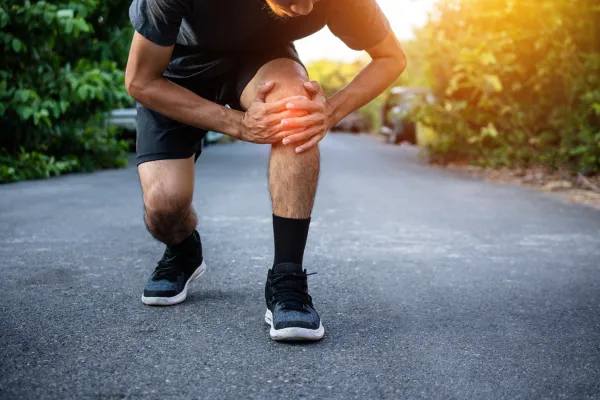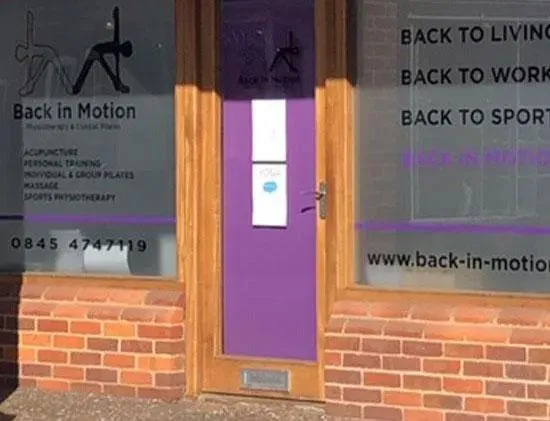Tips & Advice From Back in Motion

Conquering Knee Pain: Your Guide to Relief and Renewed Mobility
Knee pain. It's a common complaint that affects millions of people worldwide, young and old, athlete and weekend warrior. This sharp ache, dull throb, or persistent stiffness can significantly impact your daily life, limiting your ability to walk, climb stairs, or simply enjoy your favorite activities. Here at Back in Motion, we understand the frustration and limitations knee pain can bring. That's why we've created this comprehensive guide to help you demystify the cause of your pain and explore effective physiotherapy solutions for lasting relief.
Understanding the Complexities of Knee Pain:
The knee is a marvel of engineering, a complex joint that allows for bending, straightening, and weight-bearing. It's made up of bones (femur, tibia, fibula, patella), cartilage, ligaments, tendons, and fluid-filled sacs (bursa). All these components work together to provide stability, flexibility, and shock absorption during movement.
Unfortunately, this intricate system is susceptible to various issues that can lead to pain. Here's a closer look at some common culprits:
Injury: A sudden twist, fall, or sports injury can damage ligaments, tendons, or the meniscus (cartilage cushions). This can cause pain, swelling, instability, and difficulty bending the knee.
Arthritis: Osteoarthritis, the wear and tear of cartilage, is a leading cause of knee pain, especially in older adults. Rheumatoid arthritis, an autoimmune disease, can also affect the knee joint, causing inflammation, pain, and stiffness.
Meniscus Tears: These small, crescent-shaped pieces of cartilage can tear due to sudden twists or repetitive stress. Symptoms may include pain, clicking, catching, or locking of the knee.
Bursitis: Inflammation of the bursa, fluid-filled sacs cushioning the knee joint, can lead to localized pain, tenderness, and swelling. This is often caused by overuse or repetitive activities.
Muscle Imbalances: Weak or tight muscles around the knee joint, particularly the quadriceps (front thigh) and hamstrings (back thigh), can cause pain, instability, and abnormal tracking of the kneecap.
Identifying the Source of Your Pain: Why a Physiotherapist is Your Ally
Knee pain can have a significant impact on your quality of life. It's important to seek professional help to diagnose the cause and develop a treatment plan for effective relief. At Back in Motion, our experienced physiotherapists will conduct a thorough assessment to get to the root of your problem. This may include:
Detailed history: Discussing your symptoms, their onset, location, severity, and any aggravating or relieving factors.
Physical examination: Evaluating your range of motion, strength, flexibility, joint alignment, and stability of the knee and surrounding structures.
Functional tests: Assessing your ability to perform daily activities like walking, climbing stairs, or squatting.
Imaging tests (X-rays, MRI) in some cases: When necessary, these tests can provide a clearer picture of the internal structures of the knee joint to confirm diagnosis.
Based on the assessment findings, your physiotherapist will design a personalized treatment plan that addresses the underlying cause of your pain.
Physiotherapy Solutions for Lasting Relief:
Physiotherapy offers a safe and effective approach to managing knee pain. It focuses on restoring normal function, reducing pain, and preventing future injuries. Here's an overview of some potential physiotherapy techniques we may utilize:
Manual therapy: Skilled techniques like massage, joint mobilization, and stretching can improve flexibility, reduce stiffness, promote healing, and improve blood circulation to the area.
Strengthening exercises: Building strength in the quadriceps, hamstrings, and other leg muscles helps stabilize the knee joint, improves balance, and reduces stress on ligaments and tendons. Specific exercises will be tailored to your individual needs and gradually progressed.
Balance training: Balance exercises can help improve proprioception (your body's awareness of its position in space) and prevent falls, which are a major risk factor for knee injuries, especially in older adults.
Modalities: Techniques like ultrasound therapy, electrical muscle stimulation (EMS), and ice or heat therapy can be used to reduce pain, inflammation, and promote healing.
Taping and bracing: Kinesio taping or supportive braces can offer additional support, improve proprioception, and alleviate pain during activity.
Empowering Yourself: Taking an Active Role in Knee Health
In addition to physiotherapy, you can play a vital role in managing your knee pain and promoting long-term healing:
Maintaining a healthy weight: Excess weight puts additional strain on your knees. Losing weight, even a small amount, can significantly decrease stress on the joint and alleviate pain. Talk to your doctor or a registered dietitian to develop a safe and sustainable weight loss plan.
Warm-up and cool down: Before and after exercise, dedicate time to proper warm-up and cool-down routines. A warm-up increases blood flow to the muscles, improves flexibility, and prepares your body for activity. Light stretching and walking for a few minutes can do wonders. Similarly, a cool-down helps your body gradually return to its resting state, prevents muscle soreness, and reduces the risk of injury.
Listen to your body: Don't push through pain. It's your body's way of telling you something is wrong. Take breaks when needed and gradually increase activity levels. Pushing through pain can worsen the injury and prolong your recovery time.
Maintain good posture: Proper alignment helps distribute weight evenly across your joints. This takes pressure off your knees and promotes overall body mechanics. Focus on standing tall with your shoulders back and down, core engaged, and knees slightly bent. If you sit for extended periods, ensure proper back support and avoid slouching.
Choose low-impact activities: Opt for exercise options that are gentle on your knees. Activities like swimming, cycling, elliptical training, or yoga can help maintain fitness and flexibility without putting undue strain on the joint.
Utilize proper footwear: Invest in supportive shoes with good cushioning that are suitable for your activity level. Worn-out shoes can contribute to poor alignment and increase stress on your knees. Consider consulting a podiatrist for personalized recommendations.
Apply ice or heat: Ice therapy can be helpful for reducing inflammation and pain after an acute injury. Apply ice packs wrapped in a towel for 15-20 minutes at a time, several times a day. Heat therapy, such as a warm compress or bath, can be soothing for chronic pain and stiffness.
Maintain a healthy diet: Eating a nutritious diet rich in fruits, vegetables, whole grains, and lean protein provides your body with the essential building blocks for healing and maintaining healthy joints. Omega-3 fatty acids, found in fatty fish, can also help reduce inflammation.
Preventing Knee Pain: Proactive Strategies for a Healthy Future
While knee pain can be a common occurrence, several proactive measures can help prevent its onset or recurrence:
Maintain a regular exercise routine: Regular physical activity strengthens the muscles around your knee joint, improves flexibility, and helps maintain a healthy weight. Aim for at least 30 minutes of moderate-intensity exercise most days of the week.
Strengthening exercises: Regularly incorporate exercises that target the quadriceps, hamstrings, and calves into your routine. These muscles play a crucial role in knee stability and support.
Stretching: Regular stretching improves flexibility and range of motion in the legs, reducing stress on the knee joint. Focus on stretches for the hamstrings, quadriceps, calves, and glutes.
Listen to your body: Pay attention to any early signs of pain or discomfort in your knees. Taking action early on can prevent minor issues from escalating into more serious problems.
Proper form during exercise: Ensure proper form during any exercise to avoid placing undue stress on your knees. Consider working with a certified personal trainer or physiotherapist to learn safe and effective exercise techniques.
Back in Motion: Your Partner on the Road to Recovery
At Back in Motion, we understand the impact knee pain can have on your life. Our team of experienced physiotherapists is dedicated to helping you achieve lasting relief and regain control of your mobility. Through a personalized physiotherapy plan, education, and ongoing support, we'll guide you on your journey to a healthier, happier you. Don't let knee pain hold you back from enjoying an active and fulfilling life.
Contact Back in Motion today for a consultation. Our friendly staff will answer your questions and schedule an appointment to get you started on the path to knee pain relief and renewed mobility.
Together, we can conquer your knee pain and get you back to moving with confidence!
Ask Back in Motion And Their Team
Fill in the form to request a call from our team. One of our team members will call you for FREE and answer any questions or concerns you may have about your condition
Where To Find Back in Motion


